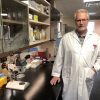Join the team conducting groundbreaking cognitive neuroscience and imaging research at Western University!
Western ranks as one of Canada’s top research-intensive universities. From fundamental to applied discovery, its researchers advance knowledge that provide tangible benefits for the economic, social, health and cultural development of citizens in London, in Canada and around the world. While the University has achieved acclaim for research in a full complement of disciplines, it has identified signature areas in which global-scale clusters of research excellence have been established.
The Brain and Mind Institute’s (BMI) mission is to provide a centralized and visible presence for cognitive neuroscience at Western University. The Institute’s primary functions are to promote research, to facilitate the training of highly qualified personnel, and to foster national and international collaborations in cognitive neuroscience. The Brain and Mind Institute is home to the Canada Excellence Research Chair, several Canada Research Chairs and two Western Research Chairs, which is a priority in Western’s strategic plan. The BMI is part of the Faculty of Social Science, in the Department of Psychology.
The BMI is the leading Canadian centre for advanced imaging technology and houses neuroimaging, neurophysiology and behavioural testing resources that provide advanced capabilities for scanning and interpreting the brain. This multi-faculty and multi-disciplinary institute includes research and academic staff from Psychology, Physiology/Pharmacology, Computer Science, Psychiatry, Clinical Neurological Sciences, Biophysics, Medical Imaging, Physics and Astronomy, Ivey School of Business.
As the Research Scientist, you will develop and oversee novel research initiatives in the field of human memory research. You will provide guidance and consultation related to a variety of research functions, and generally contribute to the development of the Memory Group within the Brain and Mind Institute. You will support the smooth and effective operation of the Memory Group, and ensure the efficient management of resources. You will lead and conduct research, publish and communicate findings to the scientific community and the wider public, and provide guidance and foster relationships with collaborators, staff, graduate students, undergraduate students and post-doctoral fellows to achieve desired research outcomes. As the ideal candidate, you will have a Ph.D. Neuroscience. You will have four (4) years’ experience post-Ph.D. in human memory research with demonstrated experience in magnetic resonance imaging (MRI), transcranial magnetic stimulation (TMS), and sleep studies; four (4) years’ postdoctoral experience including developing independent scientific programs and preparing scientific documents; three (3) years’ student supervisory and mentoring experience; and an international publication record, including first and last author publications in the area of human memory research. This position is a regular full-time, permanent position within the Professional & Managerial Association at Western University. Western offers a comprehensive benefit package, including but not limited to extended health, dental, vision and pension, for more information please visit: https://www.uwo.ca/hr/benefits/index.html. The salary range for this position is $86,660-$123,490, depending on the level of experience.
Contact information
For more information and to apply please visit: http://www.uwo.ca/hr/working/staff/index.html
Interested applicants are asked to apply online to job reference 14124 by midnight on August 24th, 2018. The anticipated start date is November 1, 2018.
Applicants must have fluent written and oral communication skills in English.
The university campus is in London, a thriving city of 400,000 people located midway between Toronto and Detroit. With parks, river valleys, tree-lined streets, and bicycle paths, London is known as the “Forest City” and boasts galleries, theatre, music and sporting events, and many opportunities for outdoor activities.
The University invites applications from all qualified individuals. Western is committed to employment equity and diversity in the workplace and welcomes applications from women, members of racialized groups/visible minorities, Aboriginal persons, persons with disabilities, persons of any sexual orientation, and persons of any gender identity or gender expression.
Accommodations are available for applicants with disabilities throughout the recruitment process. If you require accommodations for interviews or other meetings, please contact Human Resources at hrhelp@uwo.ca or phone 519-661-2194.
We thank all applicants for their interest; however, only those chosen for an interview will be acknowledged.
Posting end date: 2018/08/24










 Researchers at Université de Montréal look at the promising role played by the BMI1 gene, which could someday help mitigate or even reverse the disease.
Researchers at Université de Montréal look at the promising role played by the BMI1 gene, which could someday help mitigate or even reverse the disease.